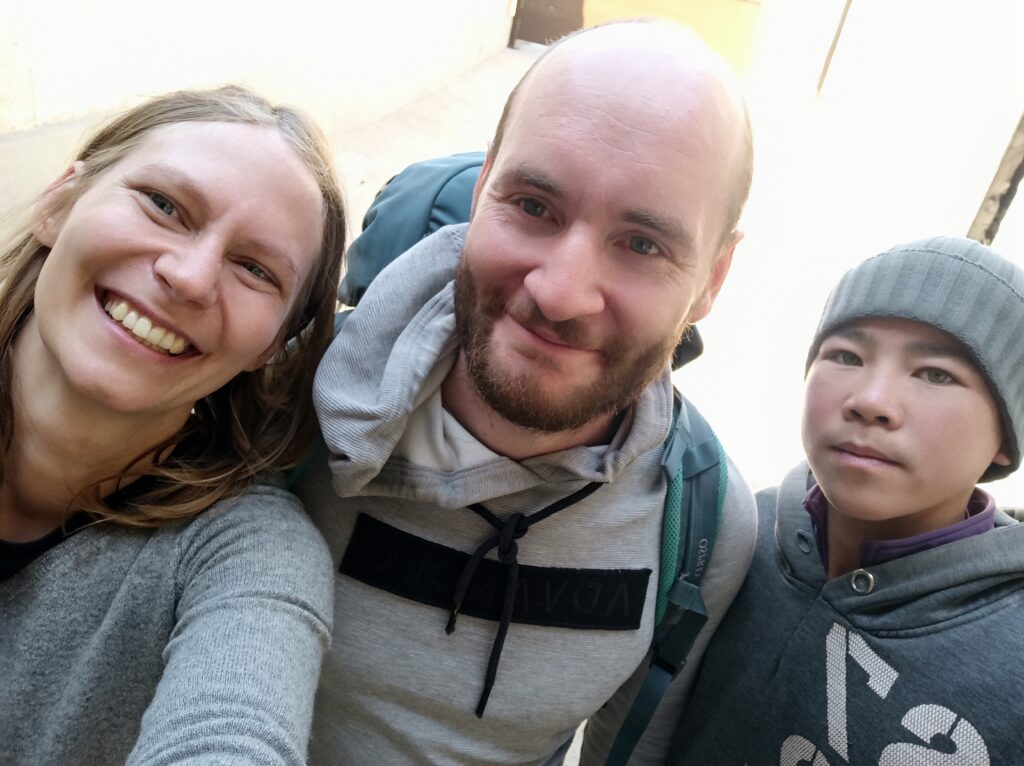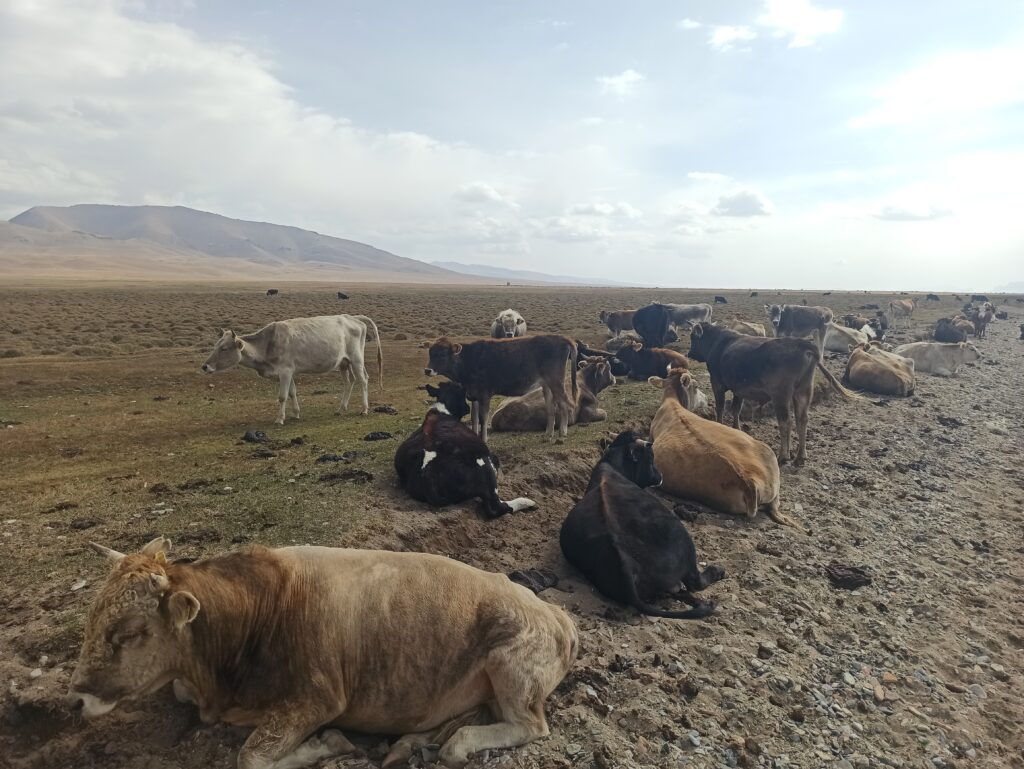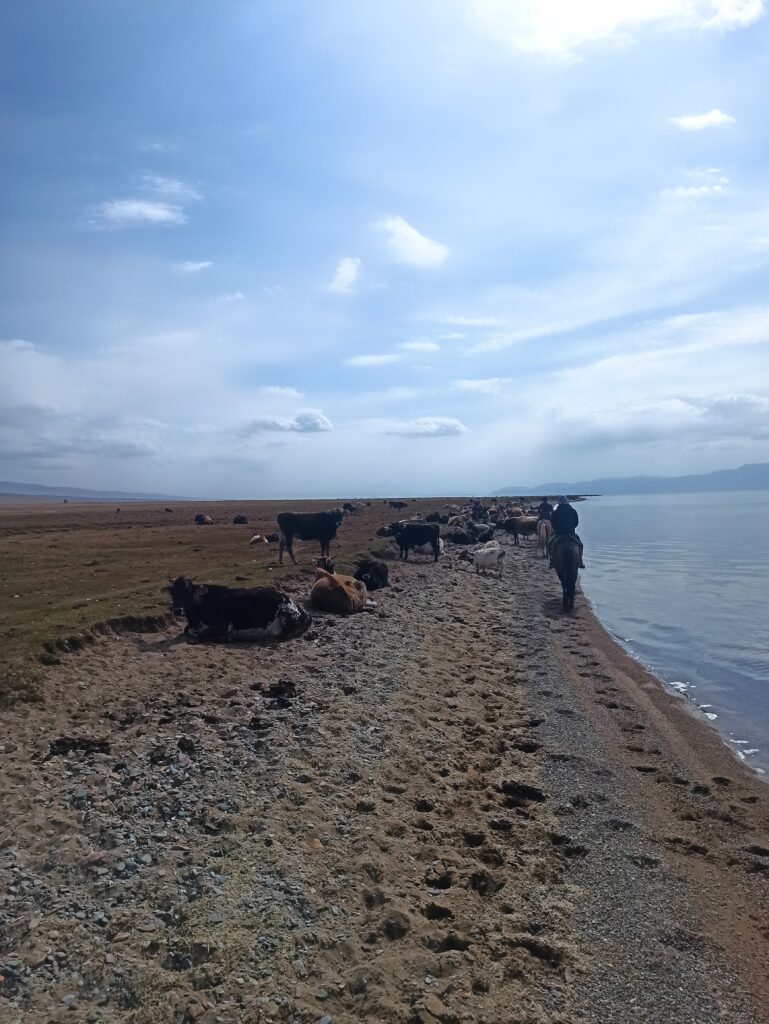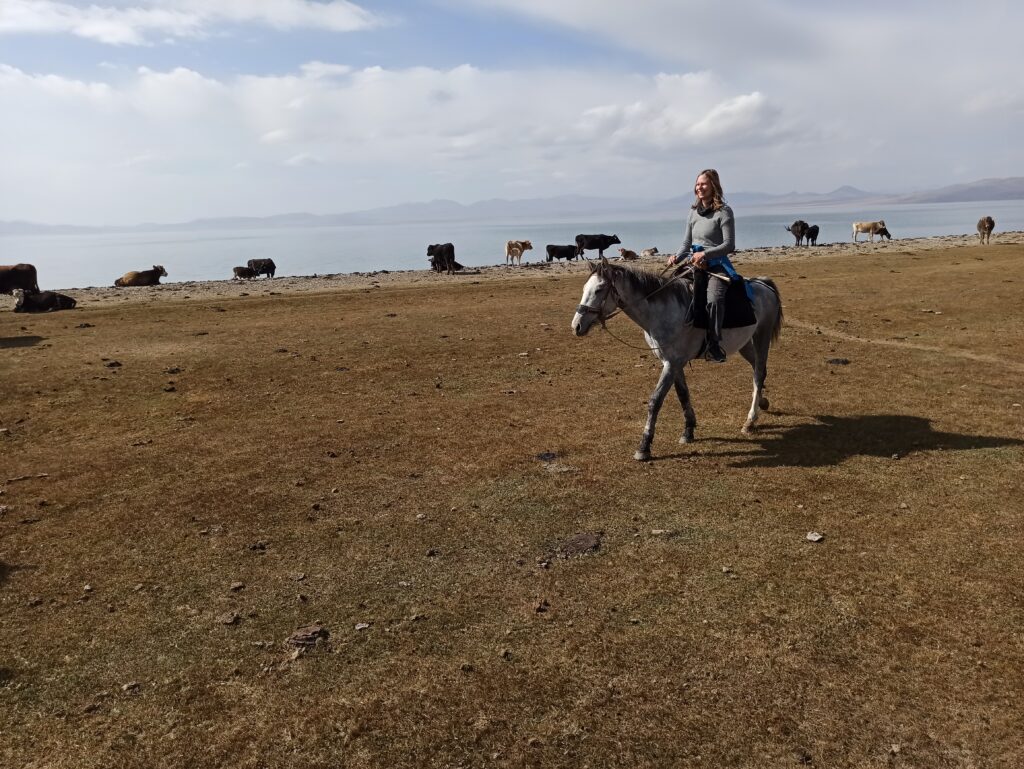Osh ist a beautiful, ancient city- and on the completely wrong side of the country if you want to get to Song Kul lake. So, our first order of business was getting there. Basically, there are two routes from Osh to Song Kul.
One is geographically further, since first you go North, to Bishkek, then back South again and aproach Son Kul from there. The other route goes across the country, which is shorter, but the roads are much worse, and often not even paved. Nevertheless, that is the route we chose. I won’t bore you with the details, it should suffice to say that it took us two days to get there. We went from Osh to Jalal-Abad and from there to Kazarman, unfortunately by private taxi. We spent the night at a lovely hostel and then headed further East. Short stop in Naryn, changed cars, went to Kochkor and then, for the last trip, we hitchhiked towards Kyzart.
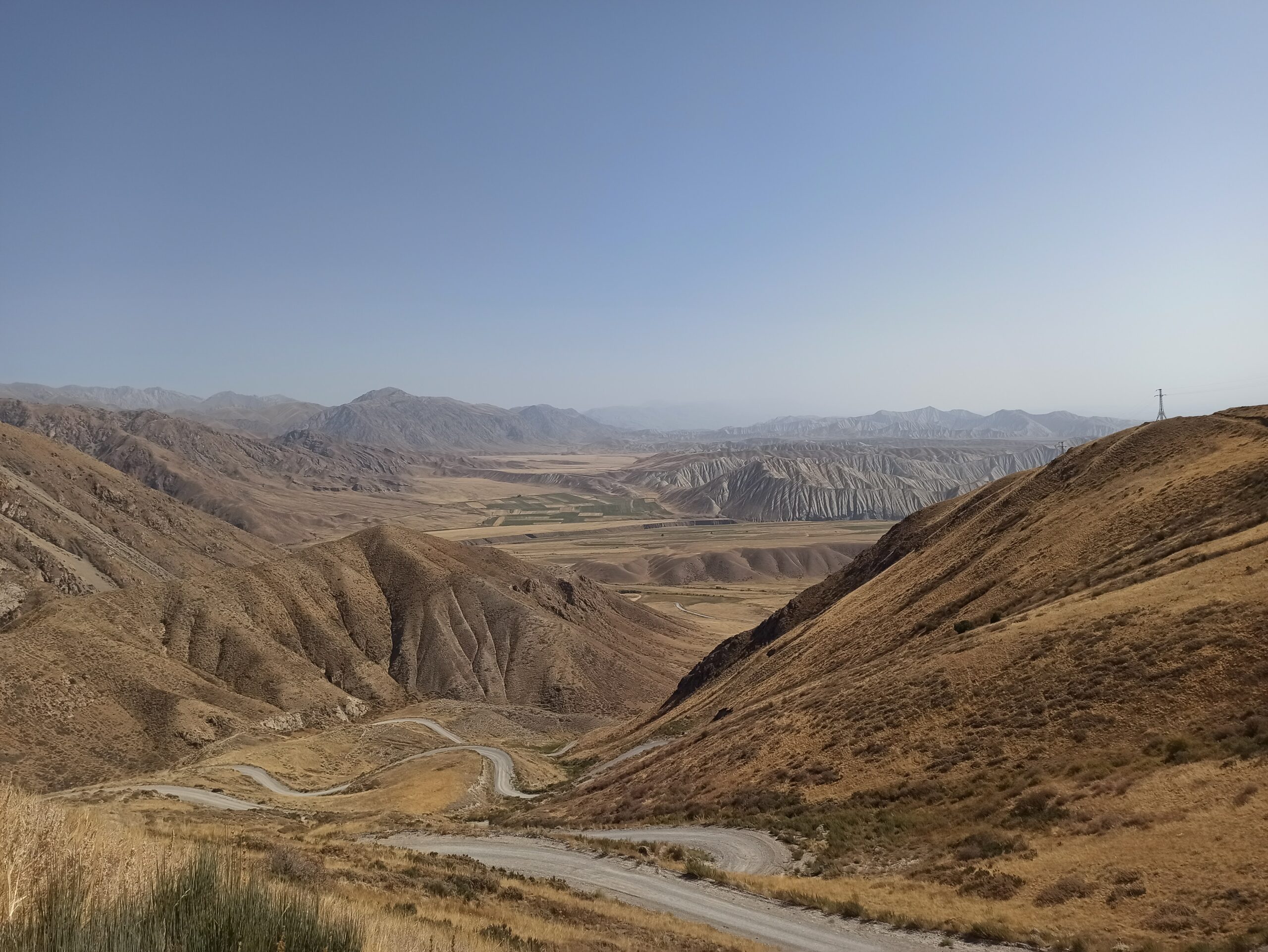
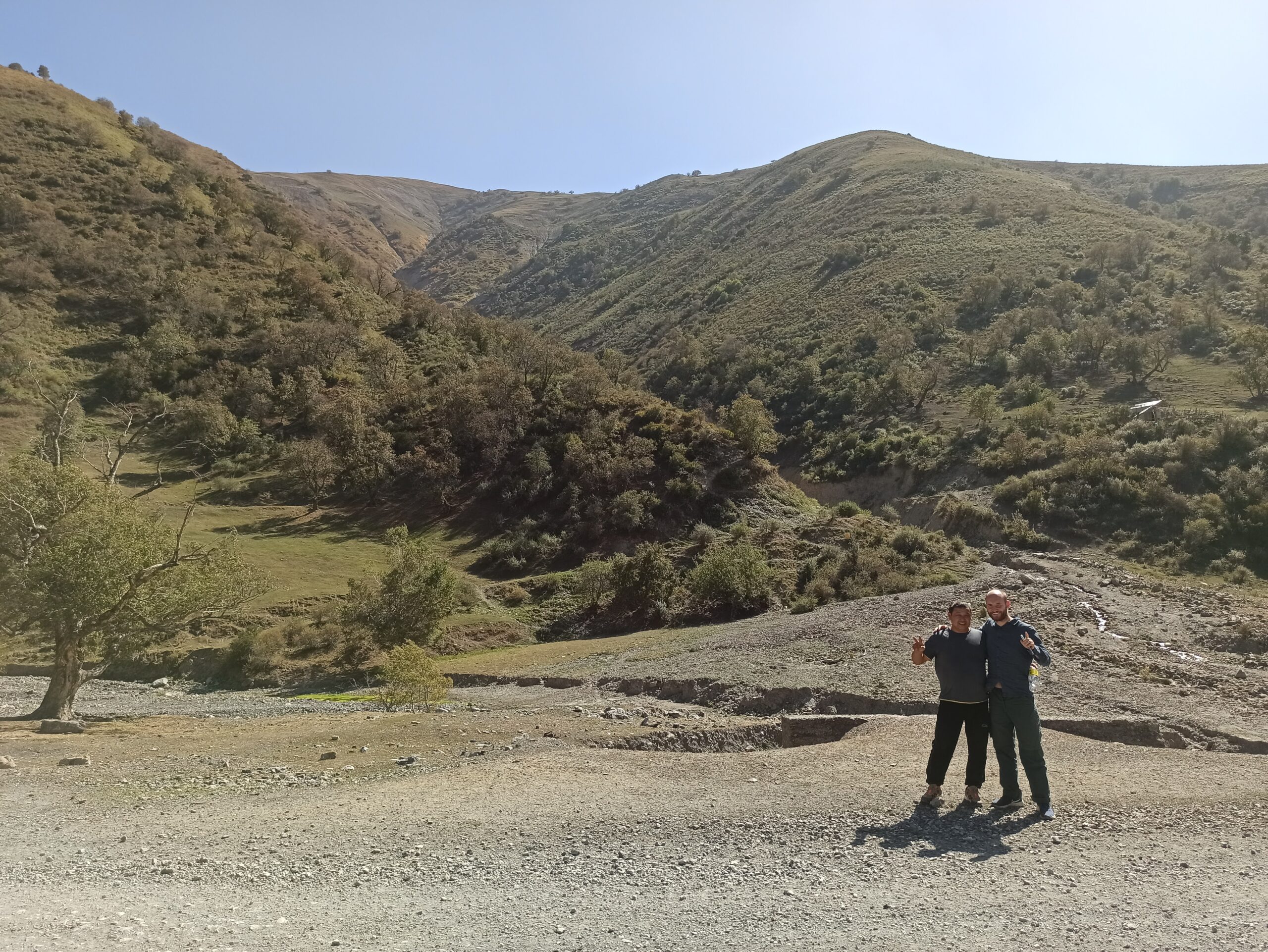
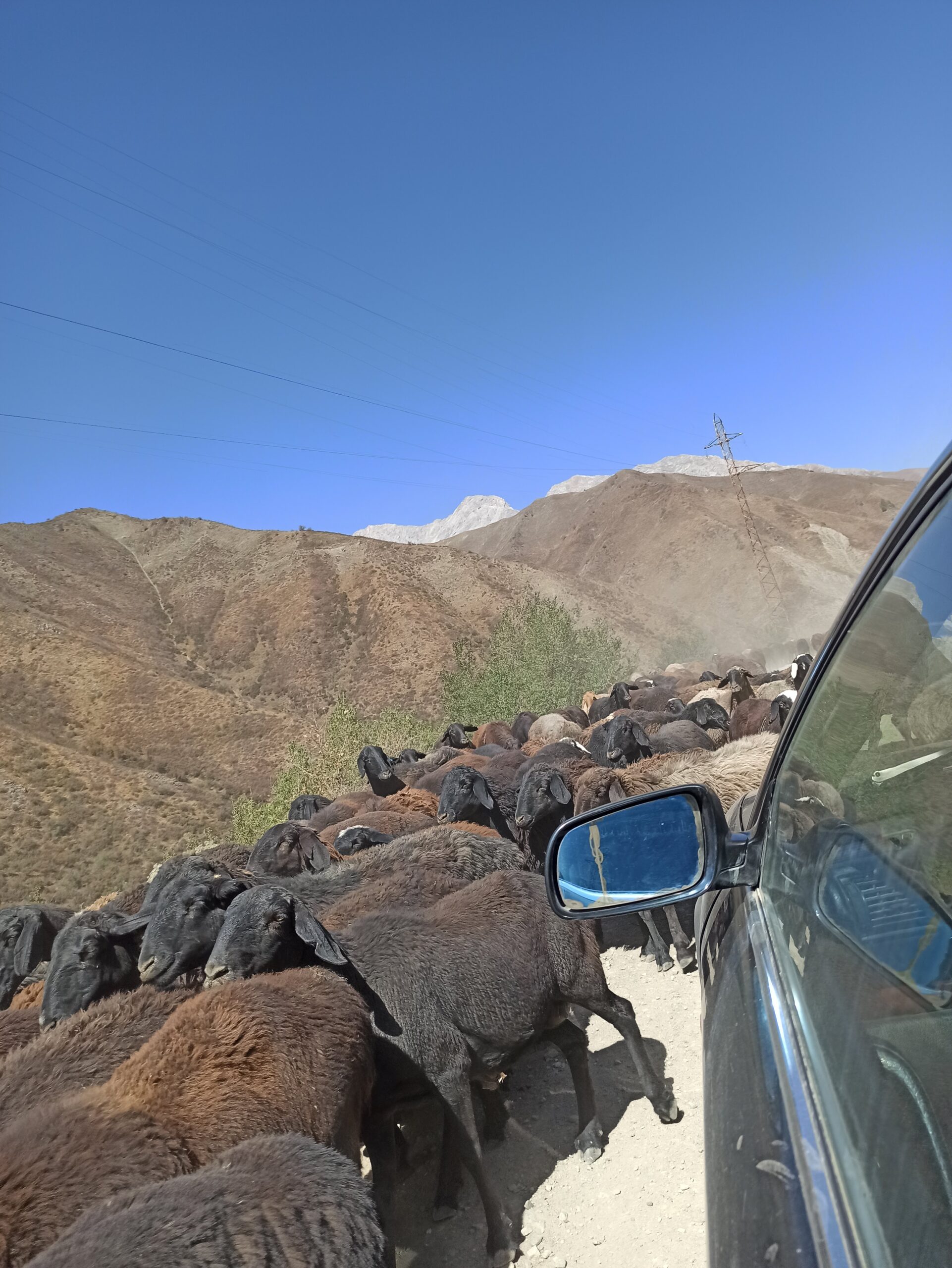
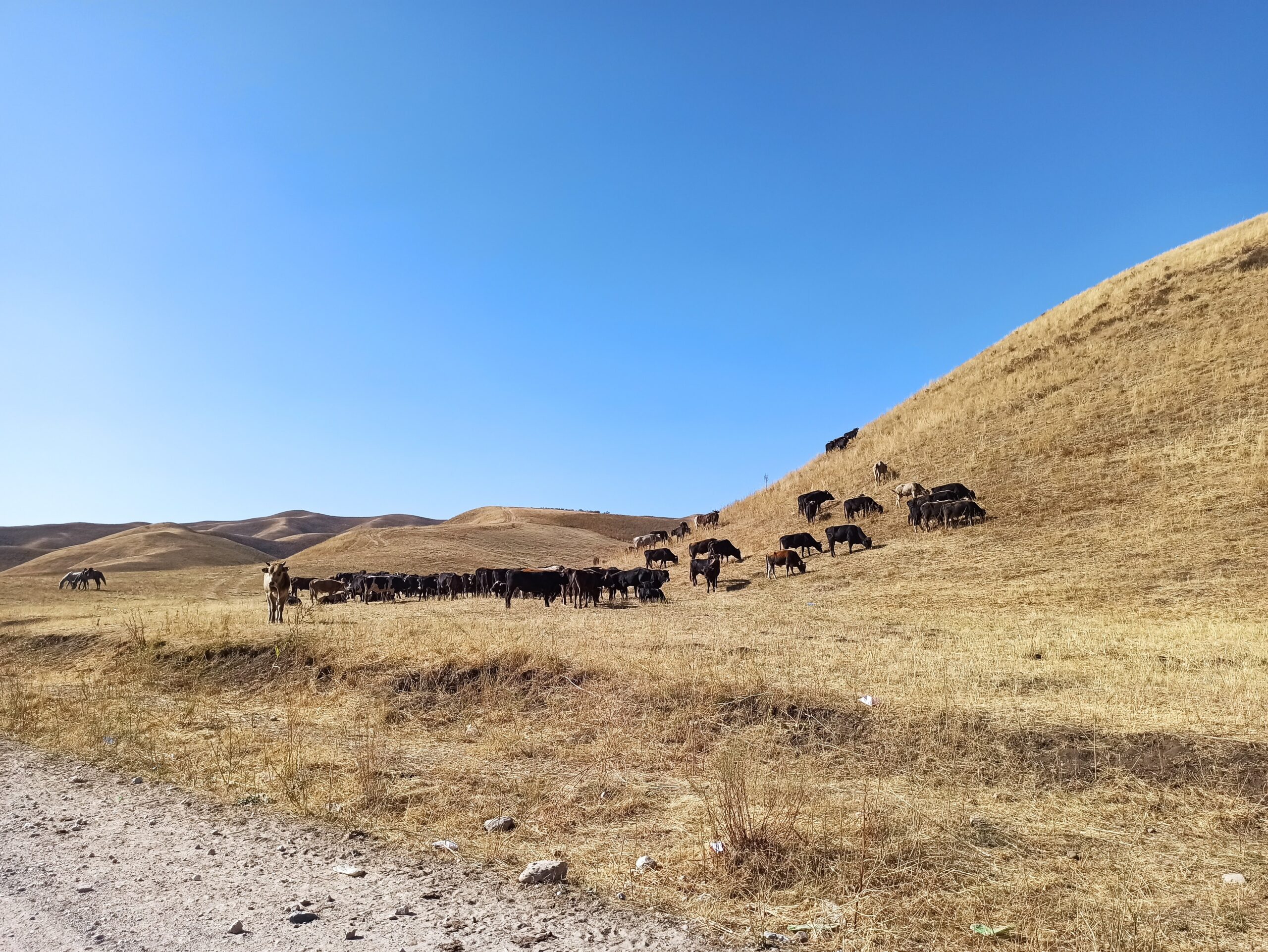
Kyzart is a pretty small town, but it’s were it’s most easy to organize horse treks from. We arrived late at a guesthouse aptly called “Horseback holidays”, pretty late, around 6 pm. We were greated by a teenaged girl, 15 years old as we later learned, who was babysitting a hoard of younger siblings. She handled them, cooking dinner for us and them as well organizing our stay and the horse treks for us with a sovereignty starkly contrasting with her age. In the end, we opted for a 4 day horse trek. The total price including the horses, the guide, accommodation and food for those 4 days was 230 $ per person. Now, for German standards, that’s incredibly cheap. However, of you read blogs from about 2 years ago, that’s about the price you can expect for both people. They explained to us that due to rising prices and inflation, it was now more expensive. We accepted.
The next day we finally started our long-awaited horse trek. Our guide was waiting for us outside with the three horses that would carry us. Turns out, our guide was a 16 year old boy. The hostess class-mate, in fact. Apparently, guiding tourists through the mountains is a more worthwhile endeavour than going to school.
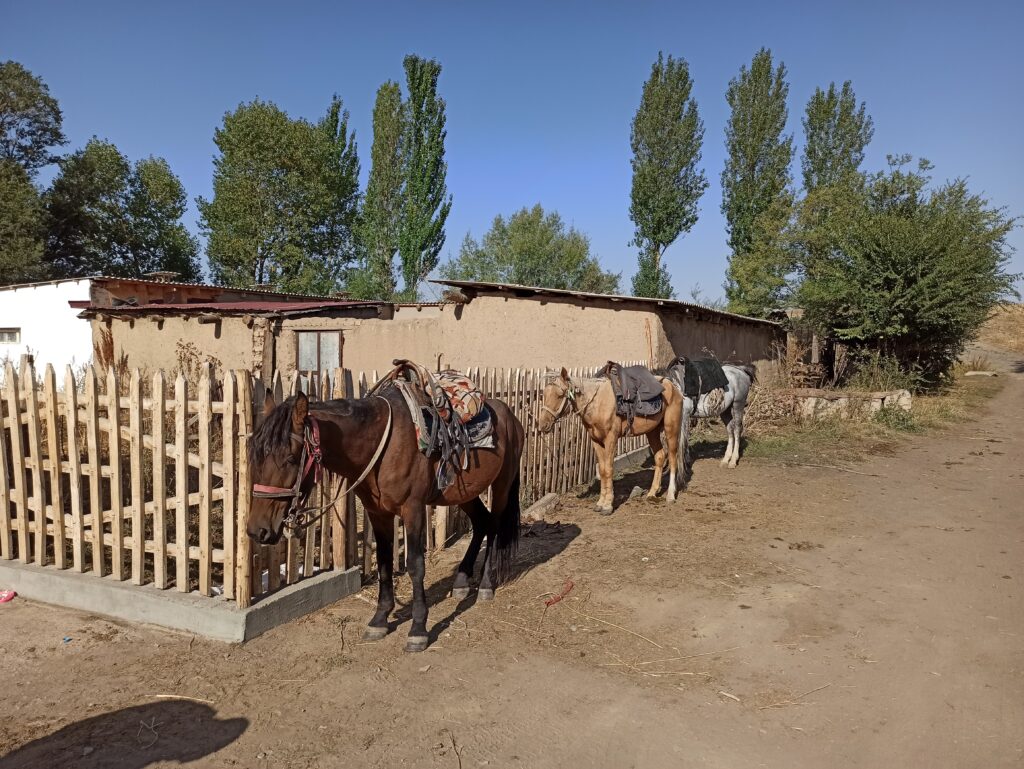


We started out, through the village, along the river and steadily up into the surrounding mountains.
We both don’t really have much experience with horses. Let me tell you how I would expect horse riding to go in Germany: If you can’t really ride, first you’ll start of with exercises on the ground. When you finally get on the horse, you’ll most likely be going in circles in the paddock, practicing your balance, learning how to hold the reins, what to do with your legs, etc. Maybe, if you’re lucky, you might actually do some outside riding after, what, 6 months?
In Kyrgyzstan, it goes like this: You get on the horse. If you can’t manage that, someone will boost you. They hand you the reins. Then, with some pantomime and a few broken words of English, they will tell you about the secret command: If you want your horse to go, or go faster, you yell “Chu, Chu!” at it, with increasing urgency until it does what you want it to. When in doubt, hit it with a stick. Got it? Okay. Off you go. So off we went.
After about 5 hours we arrived at the yurt camp, pitched picturesquely between two mountain ranges. Personally, I was happy to arrive- my butt was starting to hurt, however slow and steady we had been taking it that day. We were mostly moving at a walking pace, alternating with a fast trot which seemed the preferred method of all the riders se met along the way- personally, I was not a fan. I was thoroughly shaken through by the end of day one.
This was also the first night we spent in a yurt. The first yurt was very large, I would assume about 6-7 m in diameter, with 8 sleeping spaces.
Let me te you something about yurts.
Yurts are basically fancy tents. They are built of a wooden frame, covered and wrapped in felt (big wool sheets) and closed with a wooden door. The floors are usually covered with some sort of plastic and/or carpet on top. The are usually put up in spring and disassembled again when it get cold in autumn. We saw several yurt camps on the way busy with packing up and taking apart the yurts.
The yurt is an incredibly important element of Kyrgyz culture. The yurt is the reason why the Kyrgyz people are able to live their nomadic lifestyle to this day. It even features in their flag: the crossed beams you can see in the flag are actually what you see if you’re standing in a yurt and look up: They are the topmost, crossed beams of the roof. You can see this symbol everywhere around the country, in fences, on posters, on buildings…
We were fed very well and plied with chai by the family to whom the yurt camp belonged. The perhaps most spectacular feature, however, emerged at night. The stars were literally blazing. It was absolutely incredible. I’m not sure if I’ve ever seen them so bright.
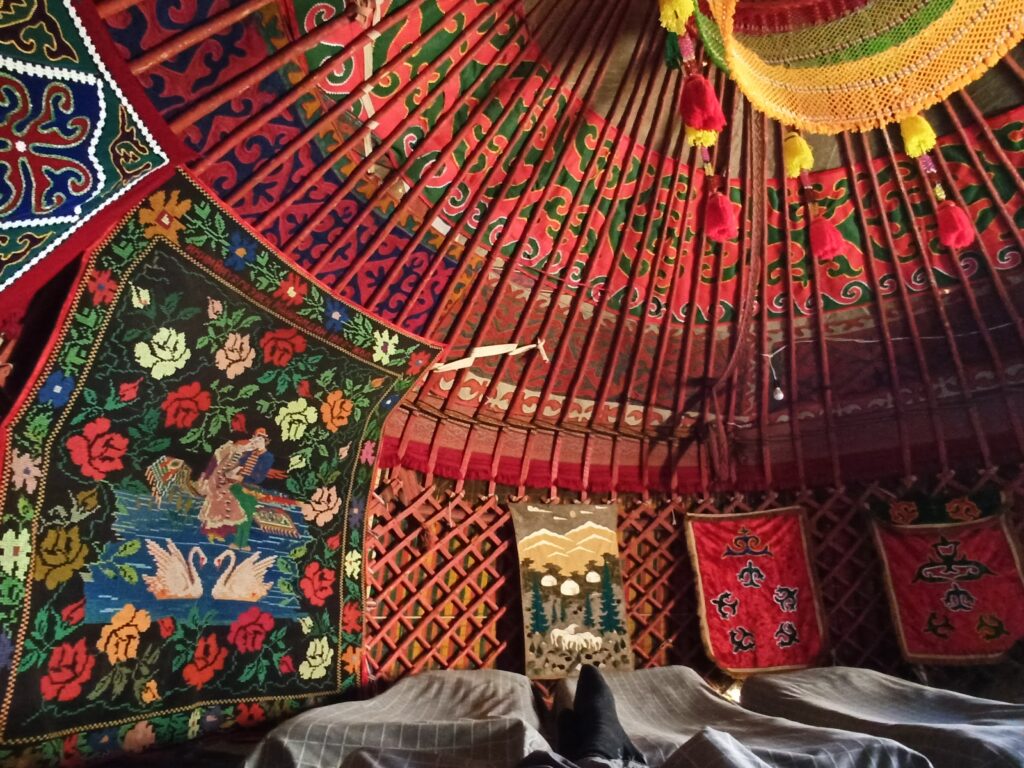

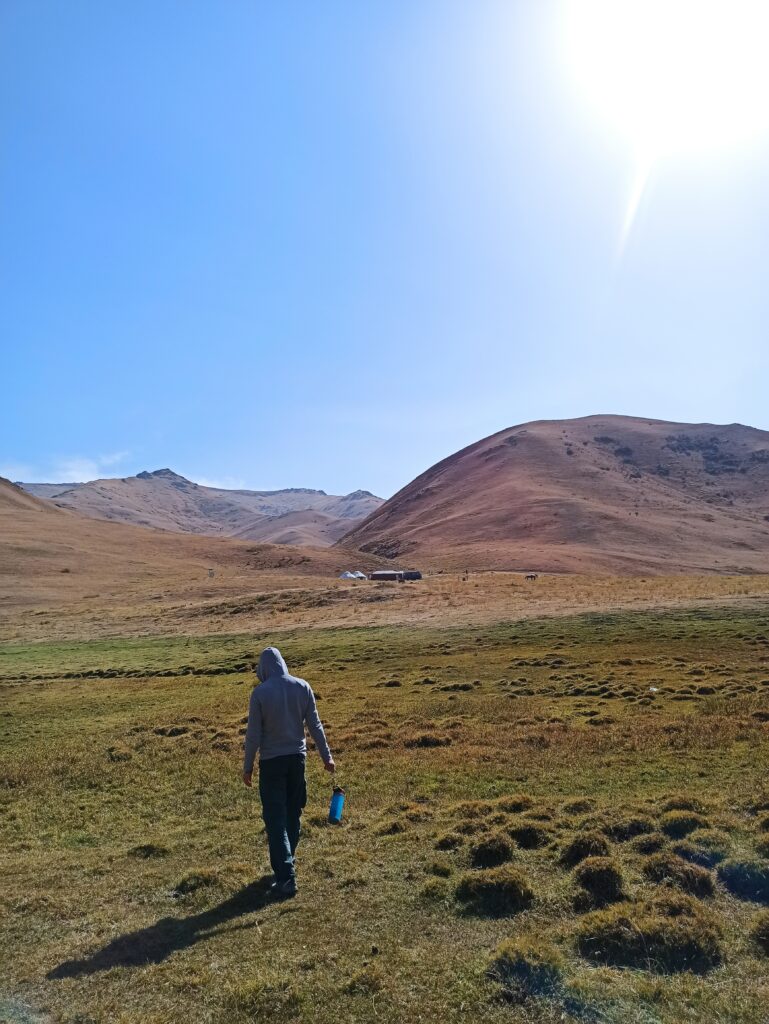
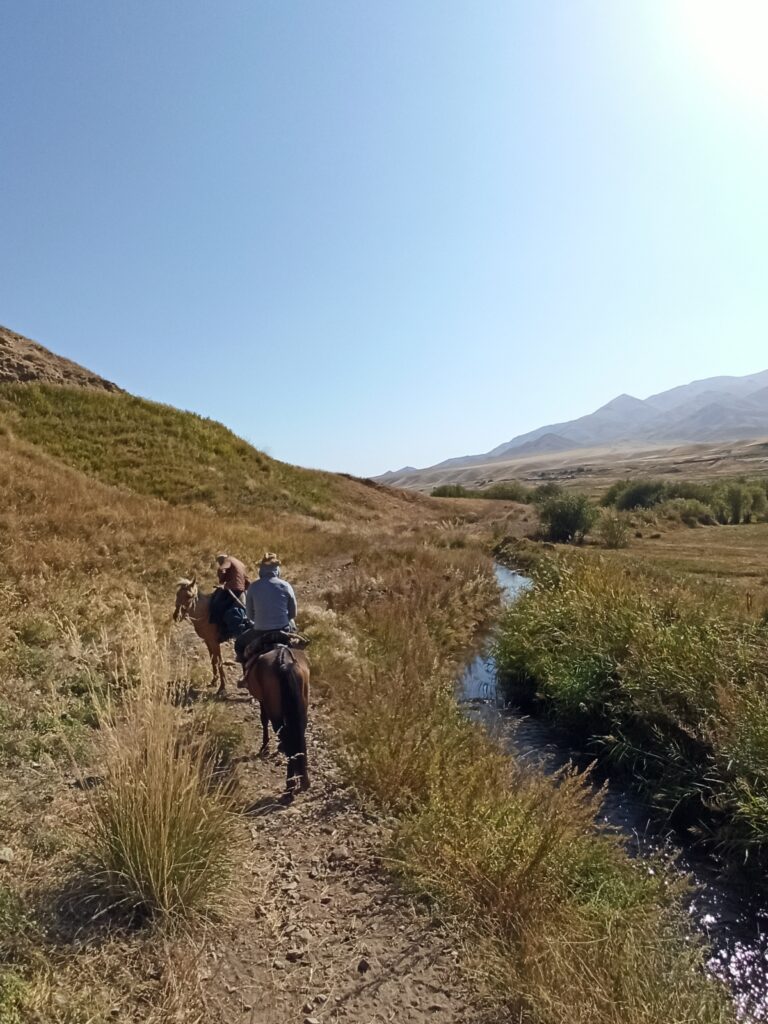
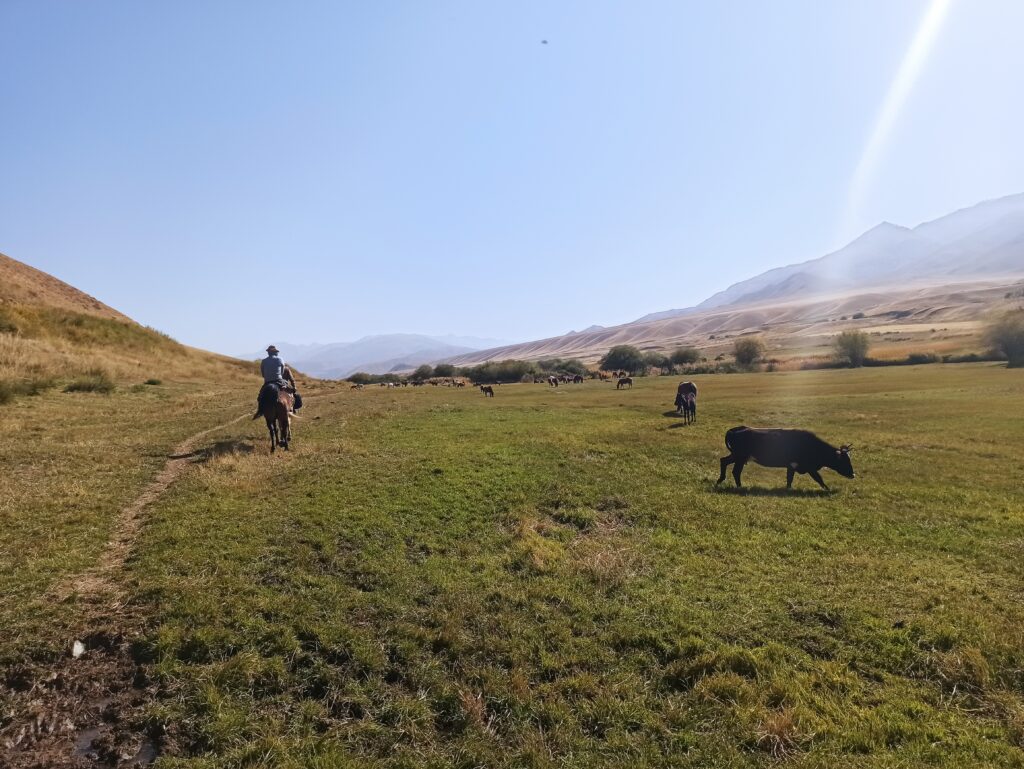
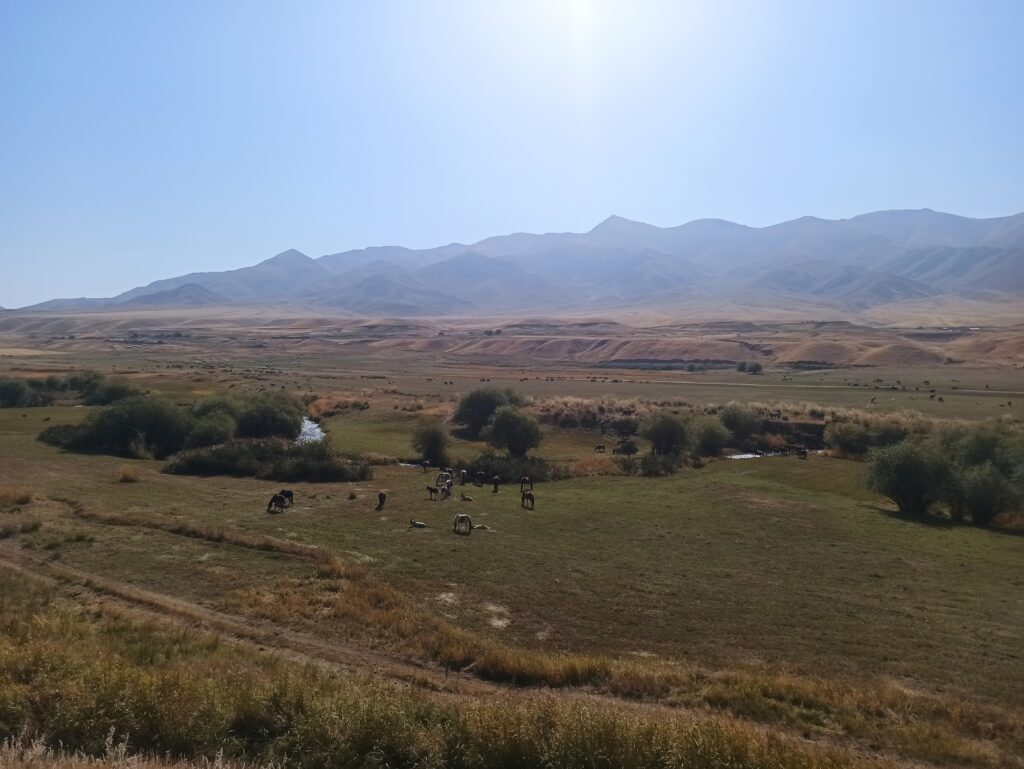
The next day our ascent began in earnest: Son Kul lies at a height of about 3000 m above sea level. We would have to cross the surrounding mountains at about 3400m. I was very glad it was the horses doing the climbing and not me. And climb they did. Our guide led us along along roads and then turned off, opting for the most direct road and up a stream bed. The ascent was very steep and honestly, I was quite surprised the horses managed it.
Finally, when we cleared the pass, we saw it: Son Kul lake. 270 square km of clear, cold water, surrounded by mountains and grassy plains upon which the herds of sheep, cattle and horses grazed.
While we descended again, my horse showed me that actually, it likes to run and we galloped for the first time during our trip. An amazing feeling. Shortly after, we arrived upon the shores. Were Son Kul anywhere else in the world, it would surely be developed with resorts, hotels, jet skiing and fishing; as it is, all there is are a few yurt camps and lots of cattle. Thus followed our second night at a yurt camp, this time at an even higher altitude. There was a small coal stove within our yurt, so it was nice and toasty when we went to bed, but as it freezes during the night, it grew very cold during the night. The next night I slept in a T-shirt, a fleece, my leggings and woolen socks. And a hat. It was still too cold to keep your face above the covers.
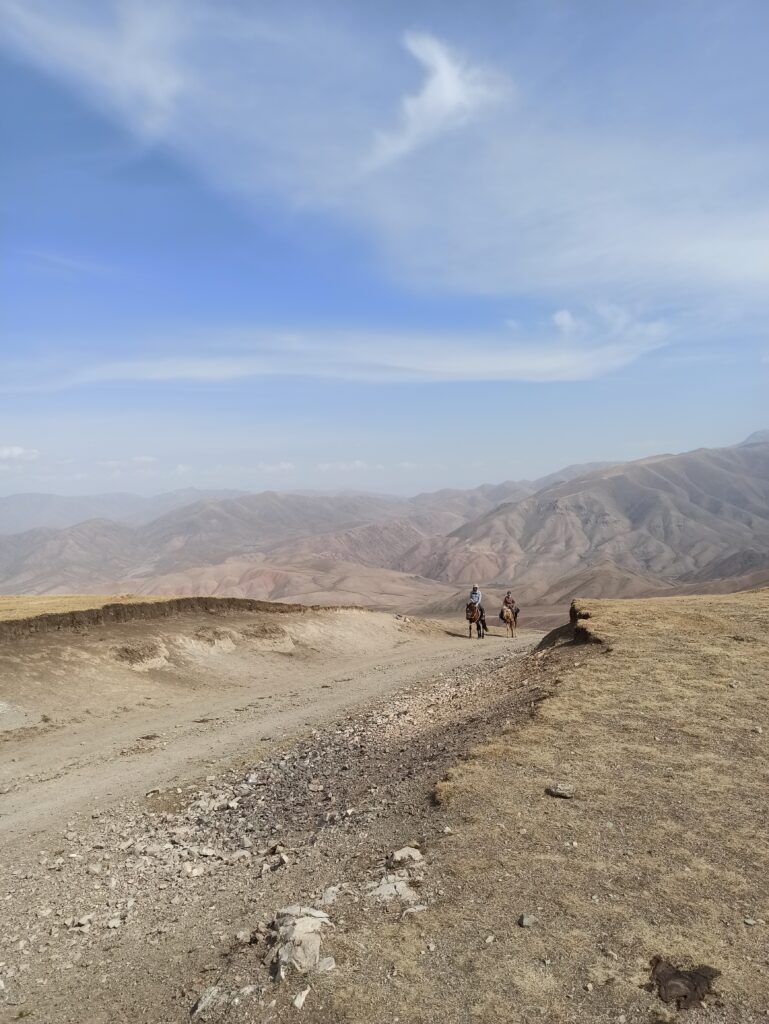
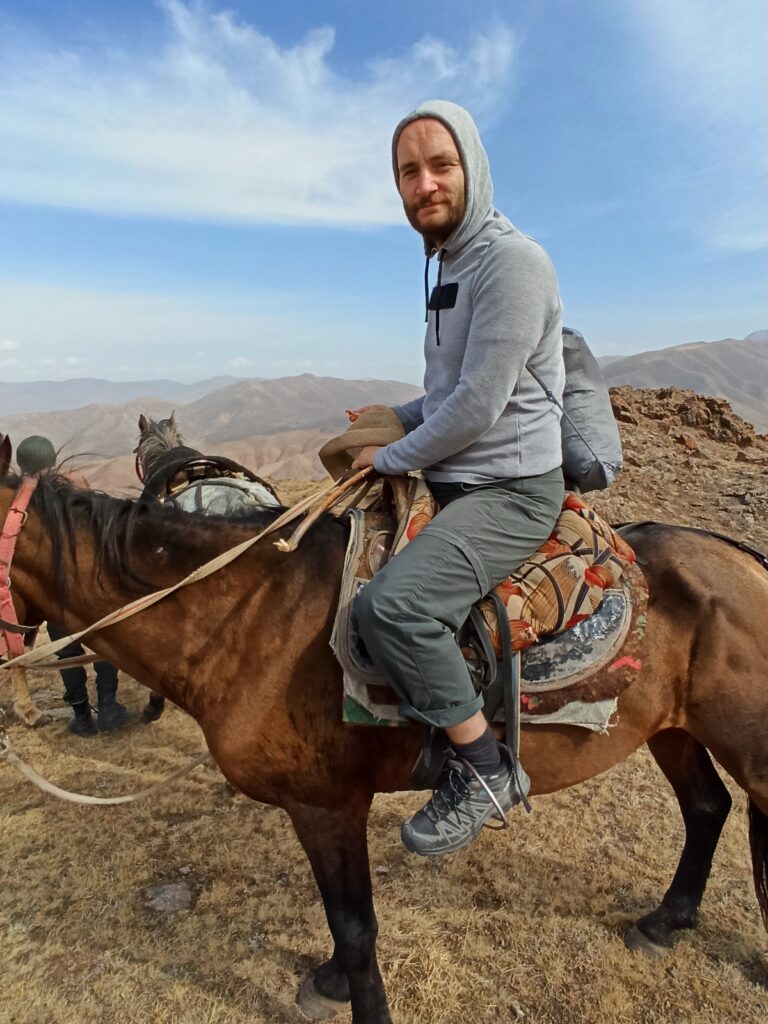
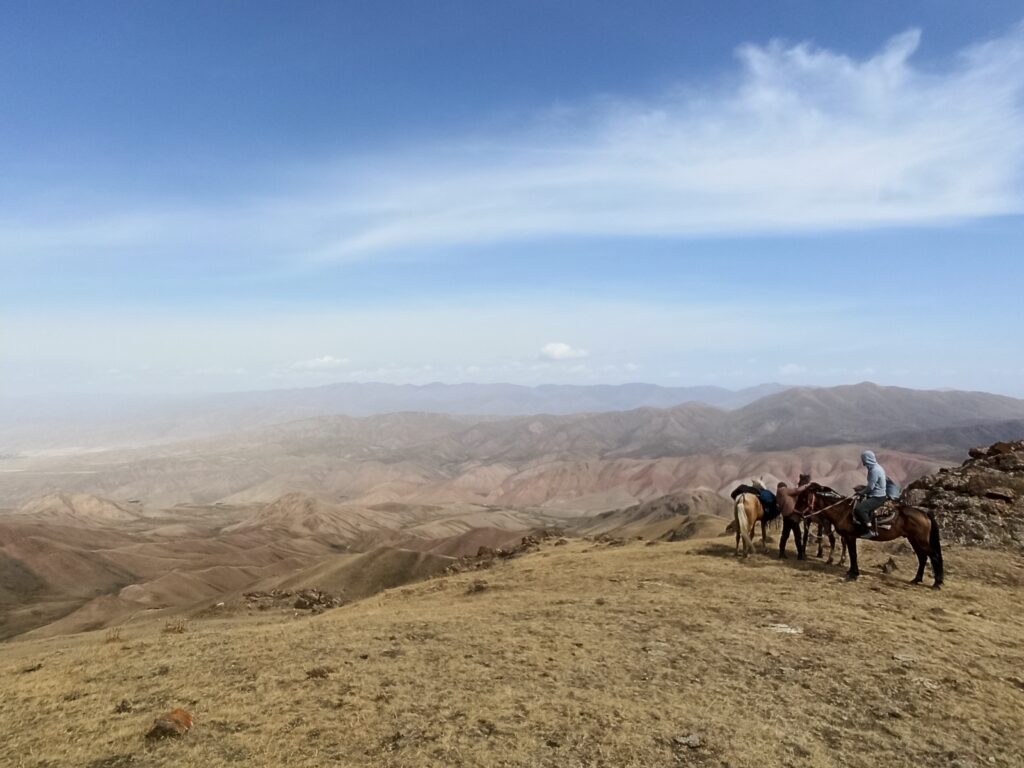

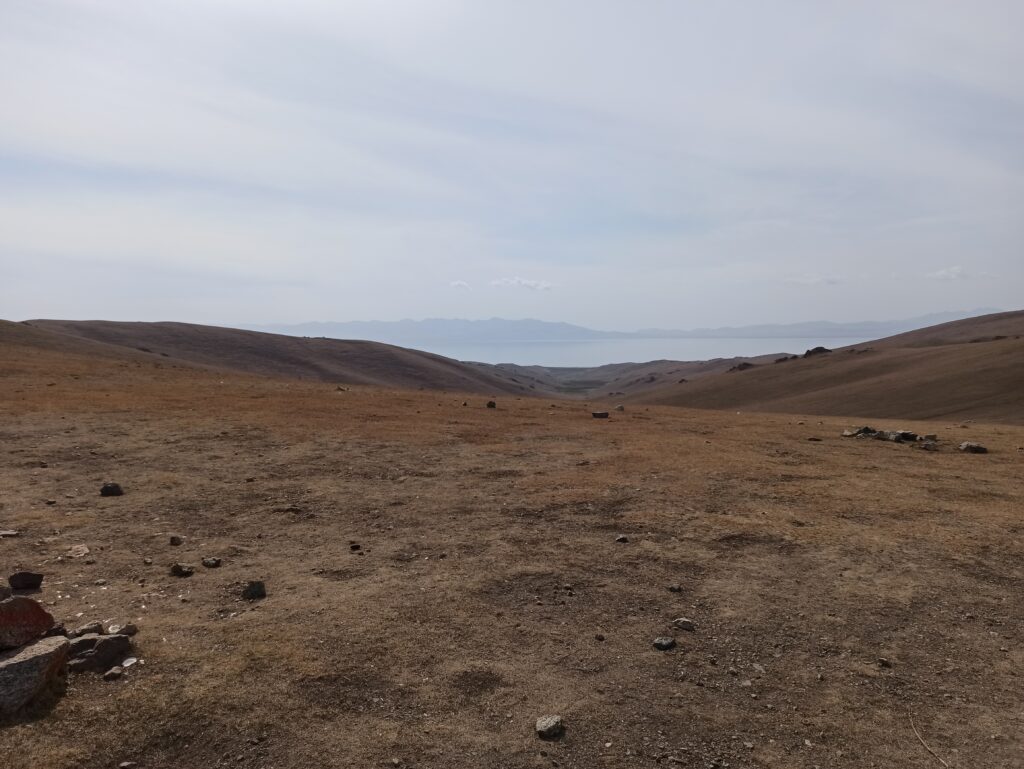

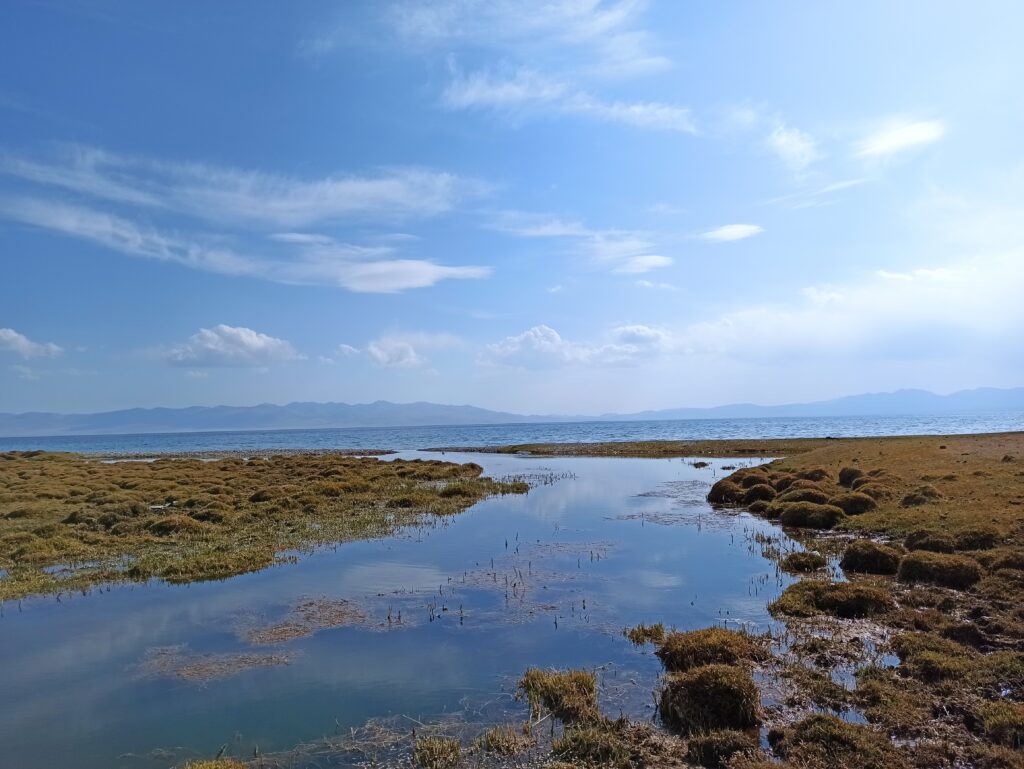
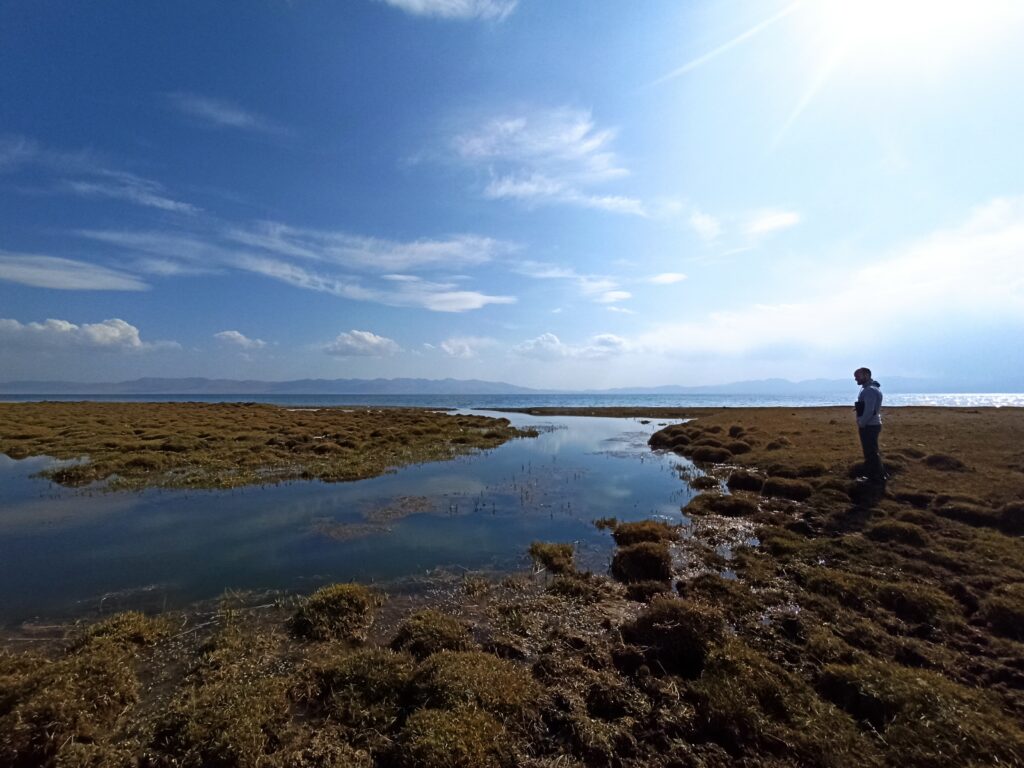
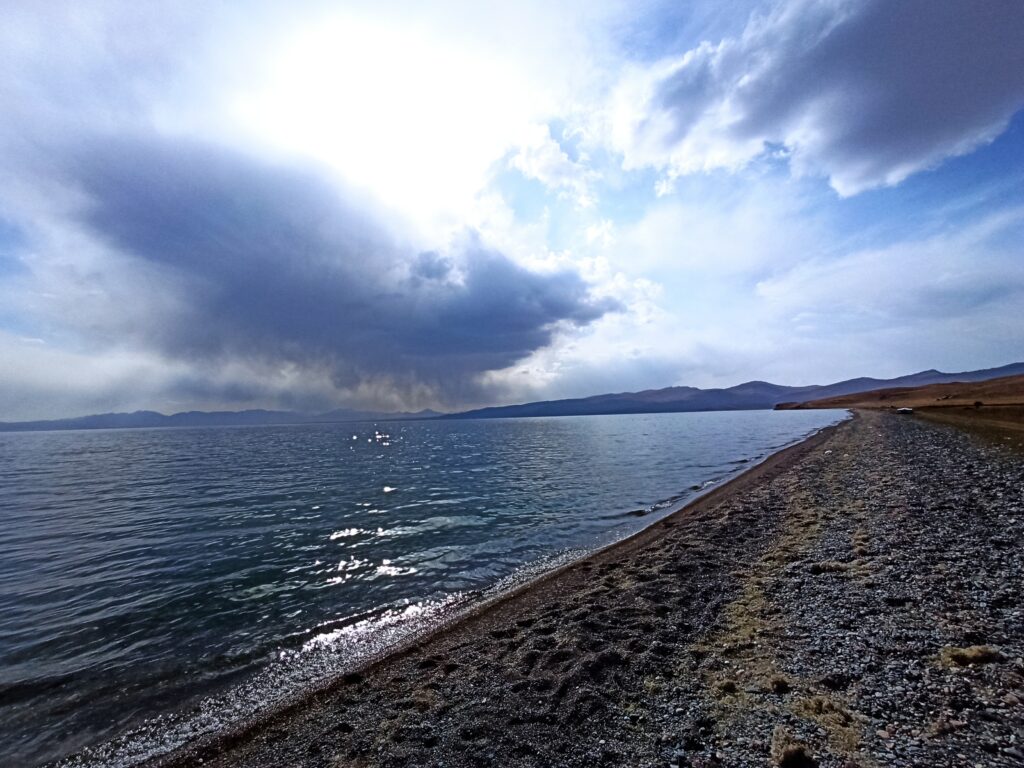
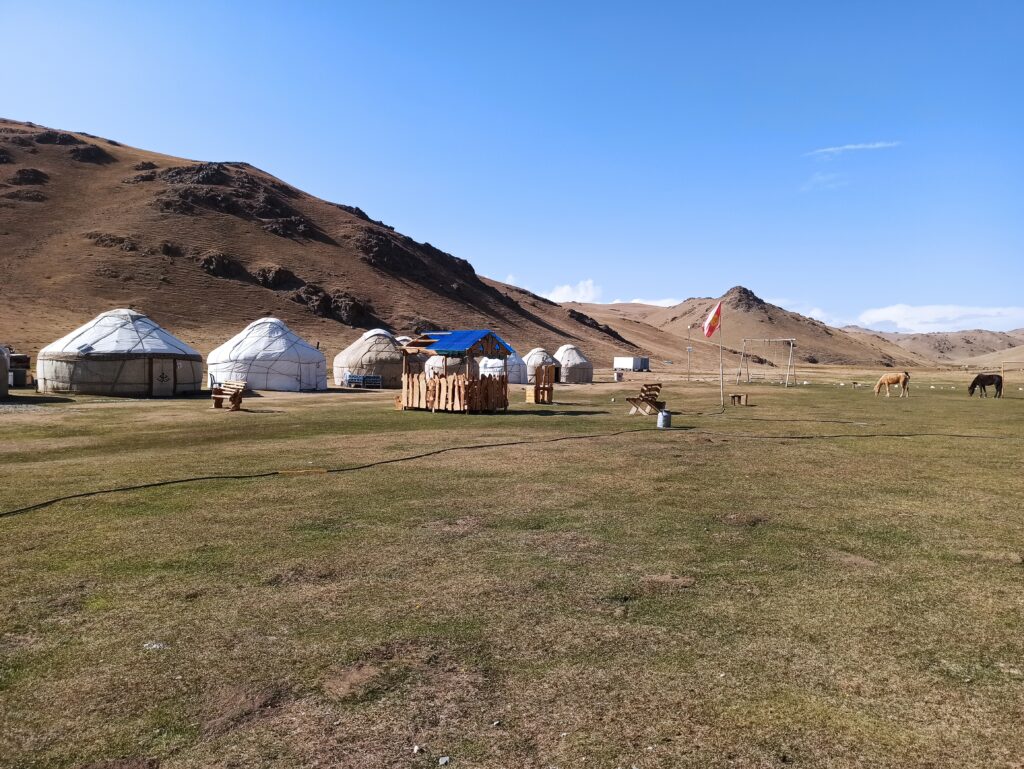

But despite the cold nights (and anyone who knows me knows I have serious issues with being cold), our third day proved the best one yet. We went for a leisurely ride along the lake, our guide showing us an old mausoleum for some Kyrgyz hero- and on the way back, while riding among the grazing horses, the herds decide it’s time to move and break into a run. My horse, enthusiastic about running at any time, agrees and takes off, with much encouragement from me, though it’s not needed. That was a truly magical moment, galloping along the lake, horses all around us, the horse doing what it does best and nothing but the sky above us- that perfect moment lived up to any expectations we might have had, and more.
When we finally head back to Kyzart, our trip coming to an end, we’re pretty beat up and exhausted. Slowly but surely, our soft bodies, not used to horse riding, are starting to fray at the edges. We both had sores in various places, some of them better left undescribed. Our guide, however, is as chipper and happy as he was on day one. Being born in a saddle is surely helpful.
